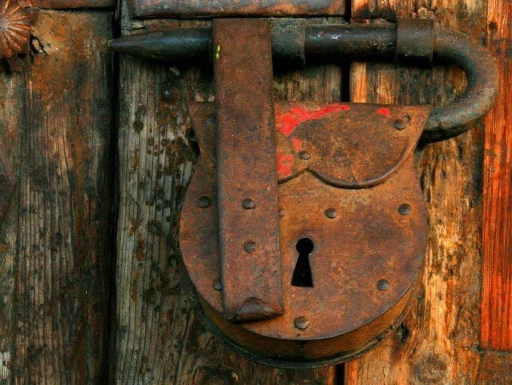Locksmithing is one of the oldest professions in the world — and for good reason. For as long as people have had valuables, they’ve needed ways to protect them. From wooden pin locks in ancient Egypt to today’s biometric security systems, the story of locks is the story of human ingenuity in the face of theft, invasion, and insecurity.
Let’s take a look at how locksmithing evolved from humble beginnings into a modern industry that keeps homes, businesses, and vehicles secure across the globe.
Ancient Egypt: Where Locks Were Born
Over 4,000 years ago, the Egyptians invented what is widely considered the world’s first lock. Made entirely from wood, this early mechanism used a set of falling pins to block a wooden bolt. A large, cumbersome wooden key was used to lift the pins and slide the bolt — the basic concept behind pin tumbler locks still used today.
Though rudimentary, this system introduced two foundational ideas that still guide modern locksmithing:
-
Mechanical pin-based security
-
The use of a unique key to control access
Ancient Rome: Keys as Jewelry and Status Symbols
By the time of the Roman Empire, locks had become more refined. Wealthy Romans stored their valuables in secure boxes at home and wore their keys as rings — not just for convenience, but as a symbol of status. Owning a lock (and something worth locking up) signaled prosperity.
The First Metal Locks: English Craftsmanship (circa 870 AD)
The earliest metal locks are believed to have been crafted in England around 870 AD. These devices were stronger and more complex than their wooden ancestors, marking a turning point in both security and craftsmanship. For centuries, locksmiths were also skilled metalworkers, forging each component of a lock by hand.
The Rise of the American Lock Industry
In the 1700s, locksmithing took off in the United States. As the new Republic grew, so did the demand for secure doors, safes, and storage. Between 1774 and 1920, over 3,000 lock-related patents were filed by American inventors.
Notable breakthroughs included:
-
Linus Yale’s “domestic lock” (which led to the modern pin tumbler)
-
Walter Schlage’s cylindrical lock, a design still widely used today
These innovations laid the groundwork for today’s commercial lock systems.
Modern Locksmithing: Tools, Tech, and Trust
Today, nearly all locks are mass-produced, and locksmiths no longer forge locks by hand. But their role is more important than ever.
Modern locksmiths are trained to:
-
Install and repair locks of all types (mechanical and digital)
-
Rekey and duplicate keys
-
Unlock vehicles, safes, and doors without damage
-
Provide security consultations for homes and businesses
From traditional deadbolts to smart locks, electronic keypads, and biometric access systems, locksmiths now navigate a rapidly evolving landscape of security technology.
Why This History Still Matters
Understanding where locks came from helps us appreciate how far security has come — and why having a knowledgeable locksmith on call is so important.
At Professional Locksmith, we combine time-tested practices with today’s tools to help our customers feel safe, secure, and prepared. Whether you’re dealing with a vintage lock or a cutting-edge smart system, we’re here to help — 24/7.
Contact us today for expert service across South Florida. Want to know more about locksmithing? Like how locksmiths open doors? More about us? Still having some questions?

